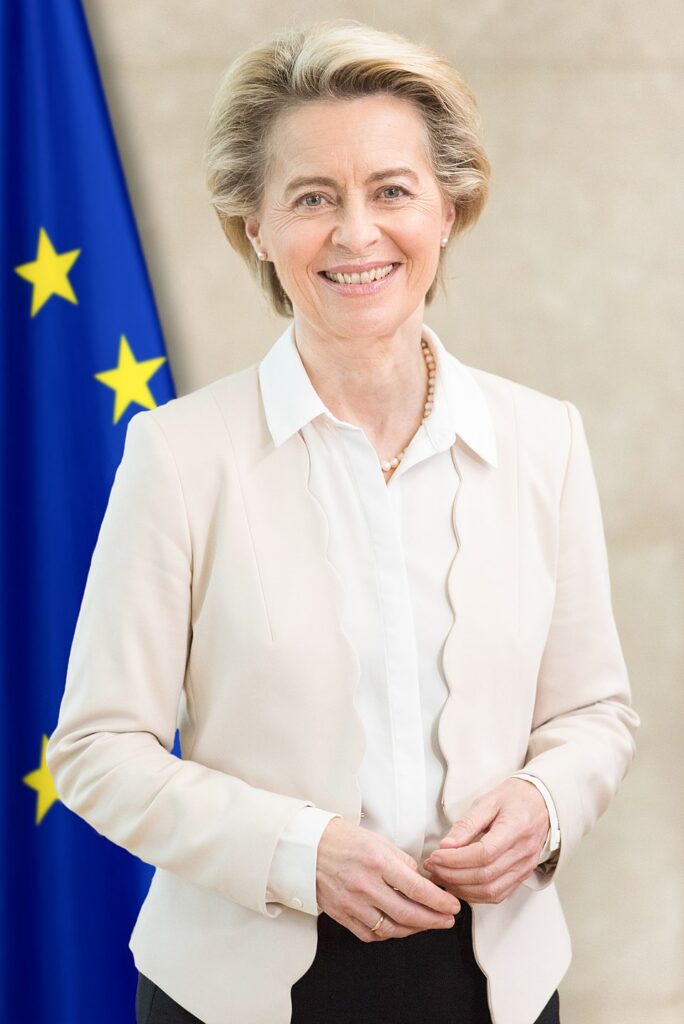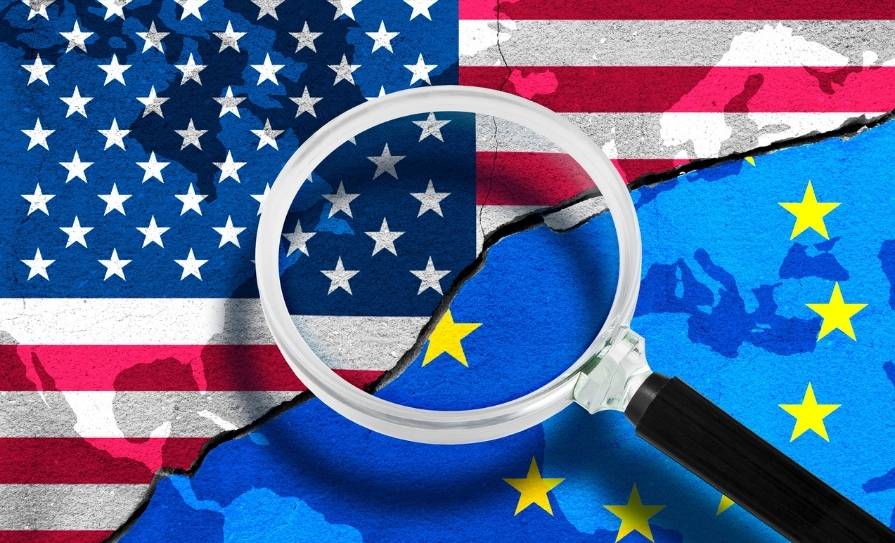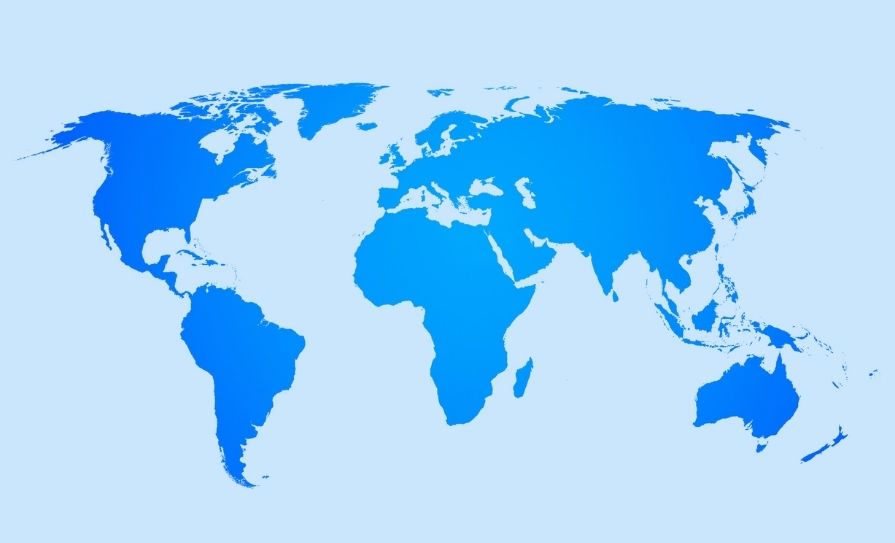The US’s loss could become Europe’s gain when it comes to attracting health researchers. Bette Browne reports
Ireland has joined a number of other European countries in boosting efforts to lure health and science researchers from the US, where they face uncertain career prospects amid political upheaval in academic circles and in the nation’s health agencies.
In March, a Nature journal poll of 1,650 US scientists revealed that three-quarters were considering leaving the country due to President Donald Trump’s policies. These policies have led to the loss of thousands of jobs at public health and science agencies, along with billions of dollars in cuts to research funding.
The Department of Health and Human Services, for instance, reduced its workforce by nearly 25 per cent in April and is planning further major budget cuts next year. These cuts would eliminate 10 offices entirely and significantly affect key agencies like the Food and Drug Administration and the Centres for Disease Control and Prevention. Although a federal judge blocked the administration on 9 May from carrying out large-scale layoffs or major reorganisations at these agencies, this decision is currently being appealed.
Earlier, on 4 April, the attempt to cap indirect costs for National Institutes of Health (NIH) grants at 15 per cent was also blocked. The cap would have slashed billions from research funding aimed at developing treatments and cures for cancer and other diseases. The NIH currently supports nearly $50 billion (€43 billion) in medical research each year across universities, hospitals, and scientific institutions.
Damage
The cuts are seen as having a significantly harmful impact on the work of researchers and their institutions.
“This is causing irreparable damage to ongoing research to develop cures and treatments for cancer, Alzheimer’s disease and related dementias, amyotrophic lateral sclerosis, diabetes, mental health disorders, opioid abuse, genetic diseases, rare diseases, and other diseases and conditions affecting American families,” Democratic Congresswoman Rosa DeLauro said in a House of Representatives debate on the issue. “The Trump administration is attempting to steal critical funds promised to scientific research institutions funded by the NIH, despite an explicit legal prohibition against this action.”
While courts have prohibited the administration from proceeding with some of its cost-cutting measures at the NIH and other agencies, the fact the administration has appealed these rulings means the legal challenges remain unresolved in the courts for months, prolonging uncertainty for staff and complicating planning efforts across the affected institutions.
To add to this uncertainty, President Trump’s proposed budget for 2026 outlines deep cuts to US scientific agencies. If enacted, it would see the National Science Foundation budget cut by 56 per cent, while the budget for the NIH would decrease by roughly 40 per cent.
For decades, the US attracted top researchers, scientists, and academics thanks to larger budgets, higher salaries, and more advanced labs and equipment than anywhere else in the world. But under President Trump, much of that advantage is rapidly disappearing or being reversed.
“The United States, through the National Institutes of Health, has been the world’s engine for scientific innovation,” Global health expert Prof Lawrence Gostin (PhD) told the Medical Independent (MI). “But the Trump administration is defunding science and even criticising career scientists.”
Universities
Although the courts have slowed some of the administration’s initiatives, these legal challenges do not seem to be dampening its determination. In early June, for instance, the President targeted one of the world’s most prestigious universities by freezing over $3 billion (€2.6 billion) in research funding for Harvard and halting the enrolment of foreign students. At the time of writing, the university was in the process of appealing the decision.
“The administration’s relentless attack on Harvard is having a chilling effect on current and prospective students and faculty,” The Washington Post noted in a report on 6 June. Harvard was not the only university affected.
Many top US institutions had already seen research grants reduced or suspended, while federally funded scholarships were put on hold. In response, nearly 2,000 scientists – including researchers from all major US universities and numerous Nobel Prize winners – released a public statement on 31 March urging the White House to “cease its wholesale assault on US science”.
The scientists said that for over 80 years America’s research enterprise has been “the envy of the world” but now “the Trump administration is destabilising this enterprise by gutting funding for research, firing thousands of scientists, and removing public access to scientific data”. They also described a “climate of fear” among researchers, who, they charged, face pressure to alter their proposals and publications to remove scientific terms objectionable to Trump officials.
Facing growing financial uncertainty, several US universities have begun to scale back. The University of Pennsylvania, for instance, is reducing graduate intake at its medical schools by over a third for autumn 2025, a move attributed to instability in research funding, according to The Daily Pennsylvanian. Meanwhile, other institutions, including Stanford and MIT, have paused new academic hires, and some graduate programmes across the country have withdrawn previously offered places.
Brain drain
Prof Robert Proctor (PhD), a historian at Stanford University, told Reuters on 5 May that President Trump was leading “a libertarian right-wing assault on the scientific enterprise” that had been years in the making. “It’s not just to Europe, but scholars are moving to Canada and Asia as well.” Data from Nature Careers, the global scientific employment platform, shows that between January and March of this year, American professionals sent 32 per cent more applications to foreign institutions compared with the same period in 2024.
Dr Danielle Beckman (PhD), a Brazil-born neuroscientist based in California, told CNN on 1 June that she plans to leave the US – potentially relocating to Germany or France – following research funding cuts by the Trump administration. Dr Beckman, who works at the University of California, Davis, said her laboratory had recently lost $2.5 million (€2.2 million) in grant funding. In addition to these financial setbacks, she cited the administration’s immigration crackdown and a shift in public attitudes towards foreigners as key factors influencing her decision to seek employment abroad.
Many other researchers could make similar moves, Prof Gostin told MI. But he also stressed that Europe needed to lay the groundwork for such an eventuality. “If European countries surged in their investments for science and made scientific careers a priority, it could result in a brain drain from the United States to Europe. It does provide an opportunity for other high income countries, especially in Europe.”
Ireland and other European nations increasingly appear to be listening and preparing to attract more top scientific talent.
European investment
While Europe aims to become more attractive to US researchers, its universities generally operate with significantly smaller budgets than those in the US. Recognising this, the EU is stepping up funding. At the ‘Choose Europe for Science’ conference in Paris on 5 May, European Commission President Ursula von der Leyen unveiled a €500 million investment plan for 2025-27 designed to “make Europe a magnet for researchers”.
The funding will be channelled through the European Research Council, which is already allocated over €16 billion for the 2021-2027 period. Ms von der Leyen also urged EU member states to raise their research and development spending to 3 per cent of GDP by 2030.

The plan, originally proposed by the French government, also includes a new seven-year “super grant” to attract “the best and the brightest researchers and scientists”, as well as a doubling of the grants awarded by the European Research Council to researchers who decide to move to Europe.
Currently, Europe is home to approximately two million researchers – around 25 per cent of the global research workforce, according to European Commission data. Ms von der Leyen also highlighted that the EU oversees Horizon Europe – the world’s largest research initiative – with Ireland among its members and an annual budget exceeding €95 billion.
“To enshrine freedom of scientific research into law,” Ms von der Leyen announced that the EU plans to introduce a new European Research Area Act. This act aims to create a single market for research, innovation and technology. “We want scientists, researchers, academics, and highly skilled workers to choose Europe,” she declared.
With a budget of €22.5 million in 2025, a ‘Choose Europe for Science’ pilot aims to strengthen research careers in Europe by funding postdoctoral programmes that go beyond project-based work. Organisations will receive funding for up to 36 months, followed by a two-year phase funded by the host institution. The goal is to create more stable career pathways for early career researchers, reduce precarity, and align research roles with long-term institutional strategies.
At the event, French President Emmanuel Macron also said that science and research must not “be based on the diktats of the few”. Europe “must become a refuge” for scientists and researchers, he declared. “The message is simple. If you like freedom, come and help us to remain free, to do research here, to help us become better, to invest in our future.” He also said his government would spend €97 million on a programme of its own to attract American researchers, while the ARC Foundation, a French cancer research organisation, has pledged €3.5 million to support US scientists to continue their work in France.
Ireland, too, has been making its case to woo US researchers. It plans to launch a new “global talent recruitment initiative” later this summer aimed at attracting researchers from abroad.
The Government will spend more than €500,000 per researcher recruited as part of an €8 million annual drive to attract top academics who want to leave the US due to the actions of the Trump administration. A sum of €533,000 will be spent on each academic every year for the next three years, which will cover salary top-ups and any equipment they need to fund their research projects.
Minister for Further and Higher Education, Research, Innovation and Science of Ireland James Lawless said the move was a direct response to the US cuts to research funding and uncertainty affecting job opportunities for scientists in healthcare and other areas.
Speaking at the Irish Universities Association’s Future of Ireland event on 12 May, he announced that the initiative would provide competitive packages, including research funding, start-up support, and investment in infrastructure. It will target strategic sectors vital to Ireland’s future economy, such as life sciences, digital technology and artificial intelligence, sustainability, and healthcare. As part of the plan, a team of “talent attachés” will be deployed to the US and other countries to attract academics to take up positions in Ireland.
“The last few months have undoubtedly changed how people view the US when it comes to research. It has become a cold place for free thinkers and talented researchers,” the Minister declared. “Faculty are having pledged funding revoked, institutes are facing shutdown.”
He added: “Today, as US research freedoms come under threat, Ireland has a unique opportunity to emulate their post-War success by offering a stable, open, EU-aligned environment where world-class researchers can thrive, contribute, and shape the future of science. Ireland will be a welcoming host for the best and brightest fleeing the US university system.”
The current plan to lure scientists here also ties in with the Global Citizens 2030 strategy, unveiled last year, which aims to “confirm Ireland’s place as a first-choice destination for international talent”.
Other EU member states have also been stepping up their efforts to attract scientists from the US. Germany, for example, is considering allocating part of its €500 billion infrastructure and climate fund to this purpose. In an interview with German media in April, Mr Lars Klingbeil – now the country’s Vice-Chancellor – proposed that the fund could be used to help draw US researchers to Germany.
“Germany must proactively say to the affected researchers in the US and elsewhere: Come to Germany, here is a safe haven for you and science.”
The Netherlands is also allocating funding to attract leading international scientists. Over the next few years, €25 million will be made available to recruit researchers from the US and other countries. The funding was announced as part of a supplementary budget published in April.
Just a few weeks before, on 20 March, the country’s Minister for Education, Culture and Science, Eppo Bruins, said in a letter to parliament: “A number of European countries are making a concerted effort to attract international scientific talent. I am determined that the Netherlands should remain amongst the forefront of these efforts.”
Spain, too, is actively involved in attracting global talent. Spain’s Minister of Science, Innovation and Universities, Diana Morant, said the government was budgeting an additional €45 million to lure scientists.

According to a report by The New York Times on 15 May, the programme offers an additional €175,000 to researchers from the US, on top of the standard package worth around one million dollars.
Catalonia has also launched a €34 million initiative aimed at attracting US researchers who may be experiencing restrictions on their academic freedom
Twelve universities will be helping to sponsor 78 “high quality” scientists in total from the US over the next three years.
In Belgium, the Vrije Universiteit Brussel has created a dozen postdoctoral positions for international scholars, with a particular emphasis on attracting those based in the US. In Portugal, NOVA Medical School cited Trump administration policies in its decision to allocate an additional €1.7 million to fund the salaries of “international researchers of excellence” over a three-year period.
Other European nations – including the UK, Norway, Sweden, and Denmark – are also joining the race to attract top scientific talent. The British government plans to invest £50 million (€59 million) to fund and relocate international scientists. Later this summer, a House of Commons Select Committee will examine how the government might leverage scientific research and innovation to support areas such as vaccine development.
Denmark has turned to social media to appeal to US researchers. In an Instagram post, the Chief Executive of the Danish Chamber of Commerce, Mr Brian Mikkelsen, issued a clear message: “This is a direct invitation to American researchers.” He added that talented individuals are losing jobs or funding because “politics is overshadowing science”, and continued: “We want you to know there is an alternative. In Denmark, we value science. We believe in facts.”
Meanwhile, Sweden’s Minister for Education, Johan Pehrson, held a meeting in April with representatives from nine universities to discuss strategies for attracting US researchers.
“To American academics and scientists: We need you!” the Minister wrote on X.
In Norway, the government announced in June that it would be spending a total 300 million kroner (€26 million) to be distributed between 2025 and 2028 to recruit and fund researchers from the US and other nations.
Canada and Australia
Countries like Canada and Australia are also eyeing US talent. The University Health Network in Toronto and other Canadian organisations have planned to allocate CA$30 million (€20 million) to recruit 100 young scientists from the US.
Meanwhile, the Australian Academy of Science has spent several months seeking skilled researchers worldwide through a programme aimed at seizing the opportunity to draw leading experts away from the US.
As Europe positions itself to attract researchers affected by US policy shifts, experts argue that success will depend not only on financial incentives but on the broader research environment. Long-term improvements to research infrastructure, career stability, and institutional support will be crucial to ensure returning or relocating scientists can thrive – and stay.
“Talent attracts talent,” Dr Jürgen Janger (PhD), an economist at the Austrian Institute of Economic Research in Vienna, emphasises. Writing in Research Professional News, he said: “Most European employers have not been able to match the financial resources of top US universities and since the Second World War European countries have seen a net movement of researchers towards the US. The size of the incentives needed – the pull factor – will depend on the strength of the push factors in the US. If the push factors are significant enough, specific inducements may be unnecessary.”
Dr Janger was drawing on his research for an EU-commissioned report that he helped to compile earlier this year, entitled Enabling conditions for attractive R&I systems and balanced circulation of talent.
“Attracting researchers from the US to Europe will require a mix of specific incentives, lowered barriers, and a general improvement in Europe’s research conditions. Without efforts to improve the general conditions for research, researchers on return grants will sooner or later be stranded in environments that are not conducive to furthering their careers.
“The best, albeit more costly, way to attract talent is to increase funding across the board to create more positions. Europe needs an increase in its science budget that balances the cuts in the US. Do this, and the rest will follow: Good researchers attract good researchers.”
The best, albeit more costly, way to attract talent is to increase funding across the board to create more positions













Leave a Reply
You must be logged in to post a comment.